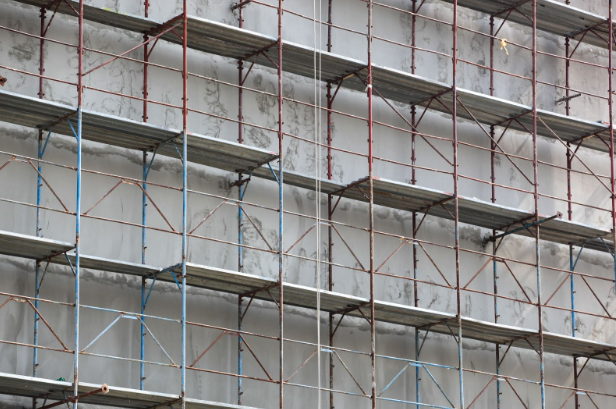
Understanding Different Types of Scaffolding for Rent in UAE: Which One is Right for Your Project?
When it comes to construction and maintenance projects, having the right equipment is crucial to ensuring the safety and efficiency of the work. Scaffolding, a temporary structure erected to provide a platform for workers and materials, plays a pivotal role in these endeavors. In the United Arab Emirates (UAE), a country known for its impressive skyline and rapid infrastructure development, the availability of various types of scaffolding for rent is abundant. Understanding the different types of scaffolding/scaffolding rental Dubai and selecting the appropriate one for your project is essential for achieving the desired outcomes.
1. Supported Scaffolding:
Supported scaffolding is perhaps the most common type of scaffolding seen in construction sites across the UAE. It consists of a series of platforms supported by uprights, commonly known as standards, and horizontal members, known as ledgers. The entire structure is held upright by a base of sturdy materials such as steel or aluminum. This type of scaffolding is versatile and can be adapted to different heights and shapes, making it suitable for a wide range of construction and maintenance projects.
Supported scaffolding can be further categorized into two subtypes: frame scaffolding and tube and coupler scaffolding. Frame scaffolding involves the use of prefabricated frames that can be easily assembled and dismantled, making it a popular choice for projects requiring frequent repositioning. On the other hand, tube and coupler scaffolding involves the use of tubes and couplers to connect various components, offering greater flexibility and adaptability to complex structures.
2. Suspended Scaffolding:
In situations where supported scaffolding may not be feasible, such as when working on the exterior of tall buildings or bridges, suspended scaffolding comes into play. This type of scaffolding is suspended from the top of the structure and can be raised or lowered to access different levels. Suspended scaffolding is particularly useful for projects that require extensive facade work, window cleaning, or painting.
Suspended scaffolding systems can be categorized into two main types: single-point adjustable suspension and multi-point adjustable suspension. Single-point adjustable suspension scaffolding is anchored to a single overhead point and can be adjusted for height. Multi-point adjustable suspension scaffolding, on the other hand, is supported by multiple overhead points, providing added stability and weight distribution.
3. Rolling Scaffolding:
For projects that involve a significant amount of movement within the worksite, rolling scaffolding, also known as mobile scaffolding, is an ideal choice. This type of scaffolding is equipped with wheels that allow it to be easily moved from one location to another without the need for dismantling and reassembly. Rolling scaffolding is commonly used for tasks such as painting, plastering, and electrical work, where access to various parts of the project area is required.
4. Cantilever Scaffolding:
Cantilever scaffolding is designed for situations where it’s not possible to support the scaffold from the ground or the building’s structure. It extends horizontally from the building, offering a platform for workers to access areas that are otherwise hard to reach. This type of scaffolding is often used for projects involving upper-floor construction, such as high-rise buildings.
Choosing the Right Scaffolding for Your Project:
Selecting the appropriate type of scaffolding for your project involves a careful assessment of several factors. First and foremost, consider the nature of the work to be carried out. Are you dealing with exterior facade work, interior maintenance, or construction at great heights? The answer to this question will help you determine whether supported scaffolding, suspended scaffolding, rolling scaffolding, or cantilever scaffolding is the most suitable choice.
Next, evaluate the accessibility of the project area. If the worksite requires frequent repositioning, a rolling scaffold might be the best option. If you need to work on a tall building’s exterior, suspended scaffolding would be the preferred choice.
Furthermore, consider the safety implications. Different scaffolding types come with varying degrees of stability and load-bearing capacity. It’s crucial to choose a scaffolding system that can safely accommodate the weight of both workers and materials.
Finally, factor in the duration of the project. Some scaffolding types are easier and quicker to set up and dismantle than others. If your project is time-sensitive, opting for a scaffolding system that can be assembled and disassembled efficiently could be advantageous.
In Conclusion:
The UAE’s construction landscape is as diverse as its skyline, and choosing the right type of scaffolding and heavy equipment rental is instrumental in achieving project success. Whether it’s supported scaffolding for versatile applications, suspended scaffolding for exterior work, rolling scaffolding for mobility, or cantilever scaffolding for upper-floor projects, understanding the distinct features and benefits of each type, along with heavy equipment rental options, is crucial. By carefully evaluating the nature of the work, accessibility, safety requirements, project timeline, and availability of heavy equipment rental services, you can confidently select the ideal scaffolding system that aligns with the unique demands of your construction or maintenance endeavor.



